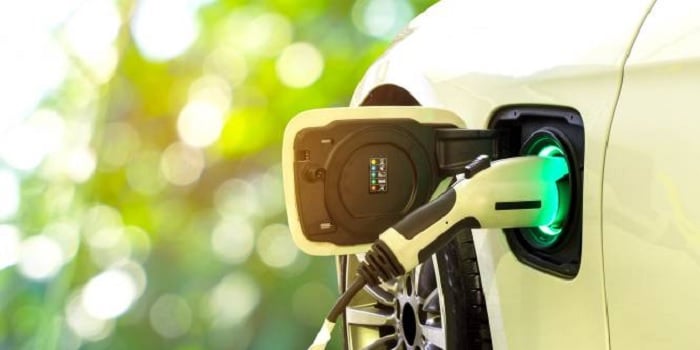EV fleet management for emissions-free future for government agencies

The emissions-free future is becoming a reality for millions of North Americans. Approximately 51% of global cities have committed to an emissions reduction target, while 13% of larger cities have committed to net zero.
Reforms for municipal fleets, specifically with electrification, are essential on the road to success. More than 140 local governments committed to purchasing 2,100 EVs in 2020 through the Climate Mayors EV Purchasing Collaborative.
But for fleet managers without much EV experience, managing an electric fleet could seem daunting. Understanding the needs and expectations of this type of fleet structure is invaluable for combatting hesitation and anxiety.
This guide can help you make informed decisions about managing electric fleets. It also highlights critical considerations before acquiring new EVs for your fleet.
The goals of fleet managers for zero-emission vehicle implementation
The ultimate goal of the zero-emission fleet is to cut carbon emissions and reduce strain on limited energy resources. However, many other benefits will impact cities, stakeholders, and the general public, making EVs invaluable to the municipality of tomorrow.
The most popular of these include the following.
Cost-effective transportation
Contrary to popular belief, you can use EVs as a cost-reduction measure for your facility. Studies have found that EVs are up to five times cheaper per mile than ICE vehicles. This means replacing an ICE fleet of 100 vehicles could cut your cost per mile by nearly 500%.
Sustainable solutions
The more EVs that you procure for your fleet, the fewer emissions your organization will produce. EVs release just a third of the emissions created by gas-powered vehicles, leading to a smaller carbon footprint overall. Relying on electricity from green sources (such as wind and water) is the most effective way to ensure sustainability.
Compliance and regulations
Dozens of municipalities have established strict plans for net zero, including New York City and Sacramento, California. It’s only a matter of time before new localities join the movement, meaning adopting EVs now could reduce your procurement curve tomorrow.
Fortunately, integrating your organization with EVs isn’t impossible. Government agencies can easily implement EV fleet management strategies to create a cleaner, emissions-free future.
Five tips for sustainable EV fleet management
Are you ready to get started with sustainable EV fleet management? Here are five tips to help you out.
1. Select suitable EV models
The first step in this process is to select EV models that meet your organizational requirements. Depending on your location or specific procurement needs, you may need certain chassis, weight classes, or charging types.
The most common EVs to choose from include:
- Battery EVs
- Hybrid EVs
- Plug-in hybrid EVs
- Fuel cell EVs
2. Build a charging plan
Before purchasing new EVs, you must build a charging plan for your fleet (or update your existing one). There are three different types that you may want to try:
- En route: Drivers can charge their vehicle on the way to their destination.
- Depot: Drivers charge an EV at a specific hub or location.
- Hybrid: This combines both strategies for the most effective charging solution.
Don’t forget to consider all the elements of your EV fleet before settling on a charging plan, including charger speed, EZ makes/models, wait times, and vehicle range.
3. Rightsize your fleet
Rightsizing is one of the most effective ways to remove ICE vehicles from your fleet. After a careful audit of your options, you can replace dated or inefficient vehicles with:
- Light-Duty EVs: Passenger vehicles, such as sedans and SUVs
- Medium-Duty EVs: Electric delivery vans for short-haul cargo transportation and small last-mile deliveries
- Heavy-Duty EVs: Electric trucks and buses for commercial and industrial use
4. Prepare maintenance professionals
Preventive maintenance is a critical component of proper EV care. However, just 1.4% of automotive mechanics are certified for EV maintenance by the ASE. This means you need to start looking for a team of technicians before acquiring your first EV model.
It may involve:
- Speaking to local dealerships
- Conversing with contract-based service providers
- Using cooperative contracts
5. Weigh in with cooperative contracts
There are many reasons that cooperative contacts are growing in popularity, especially when you compare them to traditional RFPs.
An RFP may not be enough to accommodate:
- Limited staff
- Stakeholder demands
- Emergency purchases
- Lean budgets
- Budget shortfalls
- Complex compliance rules or regulations
- Low-quality RFP bids
- Time-intensive research tasks
Cooperative contracts can collapse the timeline and make it easier to acquire better products at a lower cost. For EV fleet management in particular, this includes:
- EVs
- Charging stations
- Fleet telematics
Let’s look at your options for leveraging cooperative contracts effectively.
How to leverage cooperative contracts for EV solutions
Cooperative contracts are rising in popularity for government agencies preparing for EV procurement. Today, cities make more than 20.4% of all cooperative purchases, while counties make up 6.6%.
The good news is that cooperative contracts aren’t difficult to manage. You can integrate your procurement process with proven, researched, and competitively sourced contracts by partnering with Sourcewell.
You can register an organizational account in three different ways:
- Filling out an online form
- Claiming an existing profile
- Printing off and submitting paper documents
You can also request assistance from a Sourcewell staff member at any time.
Switching to EVs can feel overwhelming, but you don't have to do it alone. See how cooperative purchasing can ease the transition, expedite procurement, and help you save time and money with easy-to-access solutions.


